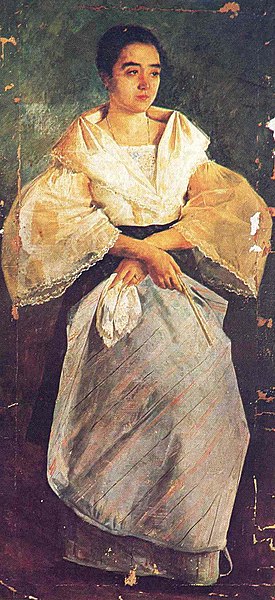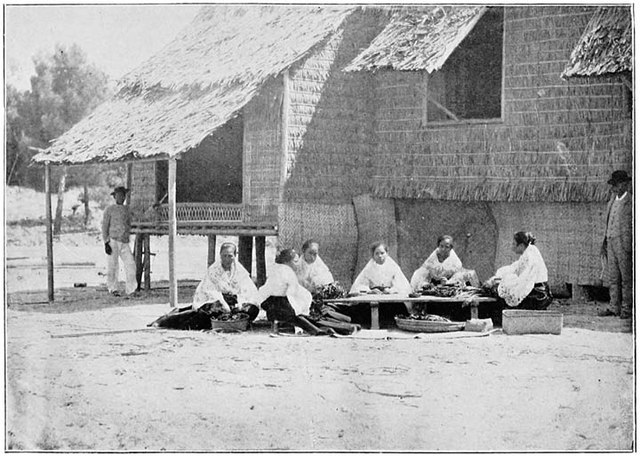The María Clara gown, historically known as the traje de mestiza during the Spanish colonial era, is a type of traditional dress worn by women in the Philippines. It is an aristocratic version of the baro't saya. It takes its name from María Clara, the mestiza protagonist of the novel Noli Me Tángere, penned in 1887 by Filipino nationalist José Rizal. It is traditionally made out of piña, the same material used for the barong tagalog.
La Bulaqueña, an 1895 painting by Juan Luna sometimes referred to as "María Clara" due to the woman's dress
Tampuhan ("Sulking"), an 1895 painting by Juan Luna depicting a Filipina in traditional traje de mestiza dress. Believed to be the same woman as in La Bulaqueña.
The Maria Clara is a form of baro't saya but traditionally worn by Filipina women with a pañuelo (neck scarf) over the shoulders and accessorized with a delicate abaniko (fan).
Woman in terno with stiffened "butterfly" sleeves
Women in the Philippines may also be known as Filipinas or Filipino women. Their role includes the context of Filipino culture, standards, and mindsets. The Philippines is described to be a nation of strong women, who directly and indirectly run the family unit, businesses, government agencies and haciendas.
Group of Filipino women wearing modern apparel
Mestiza Filipina women in Maria Clara gown, 1899.
A Filipino mestiza woman in 1875.
Filipina women making cigars






